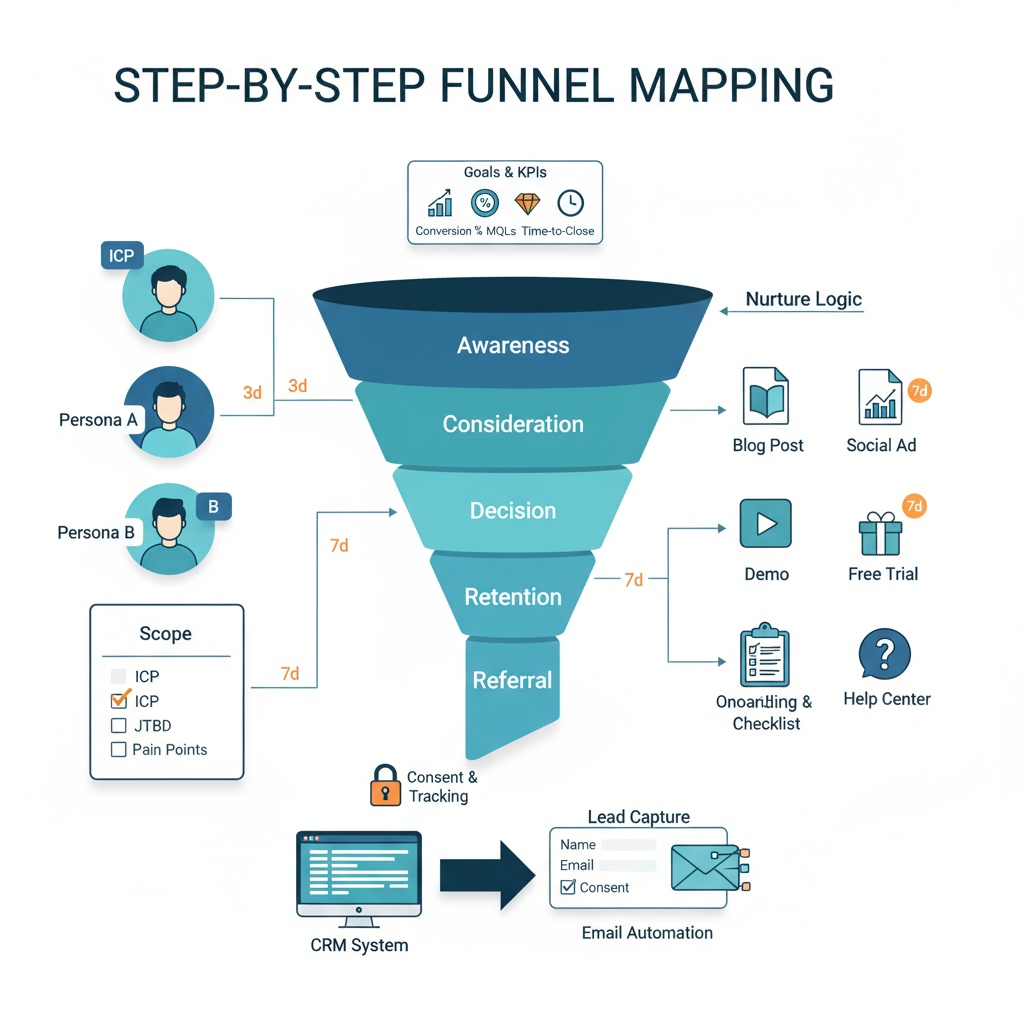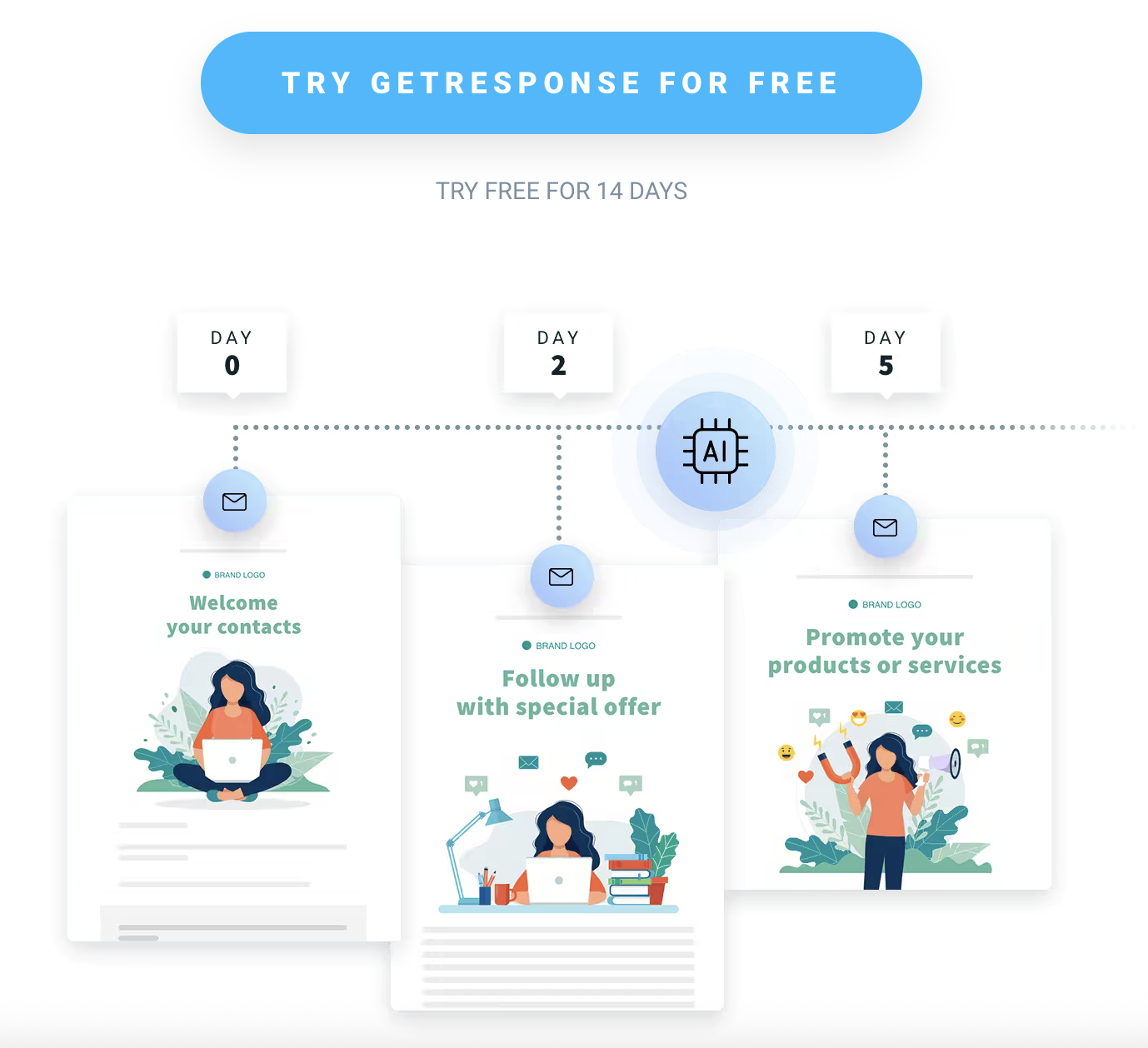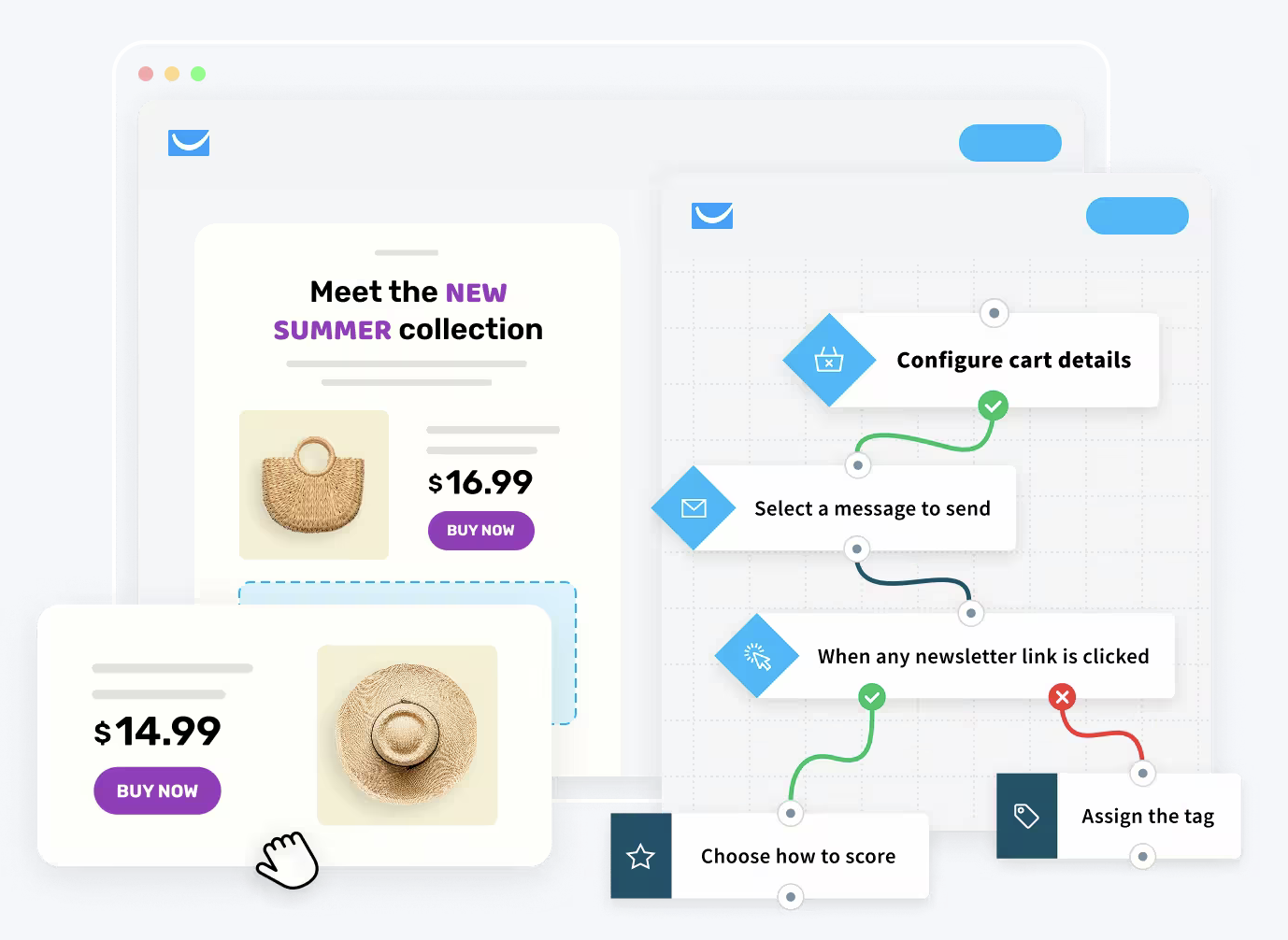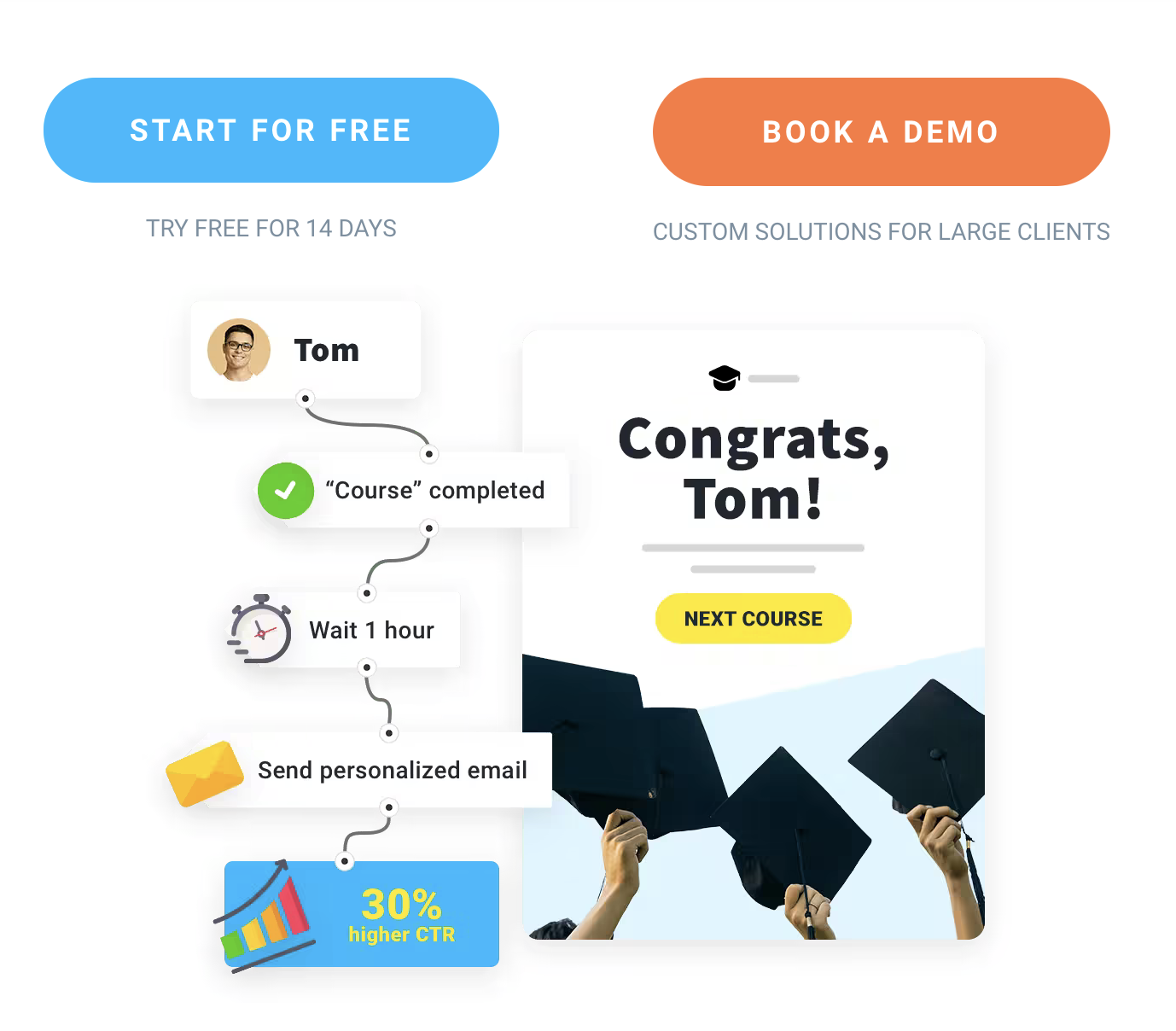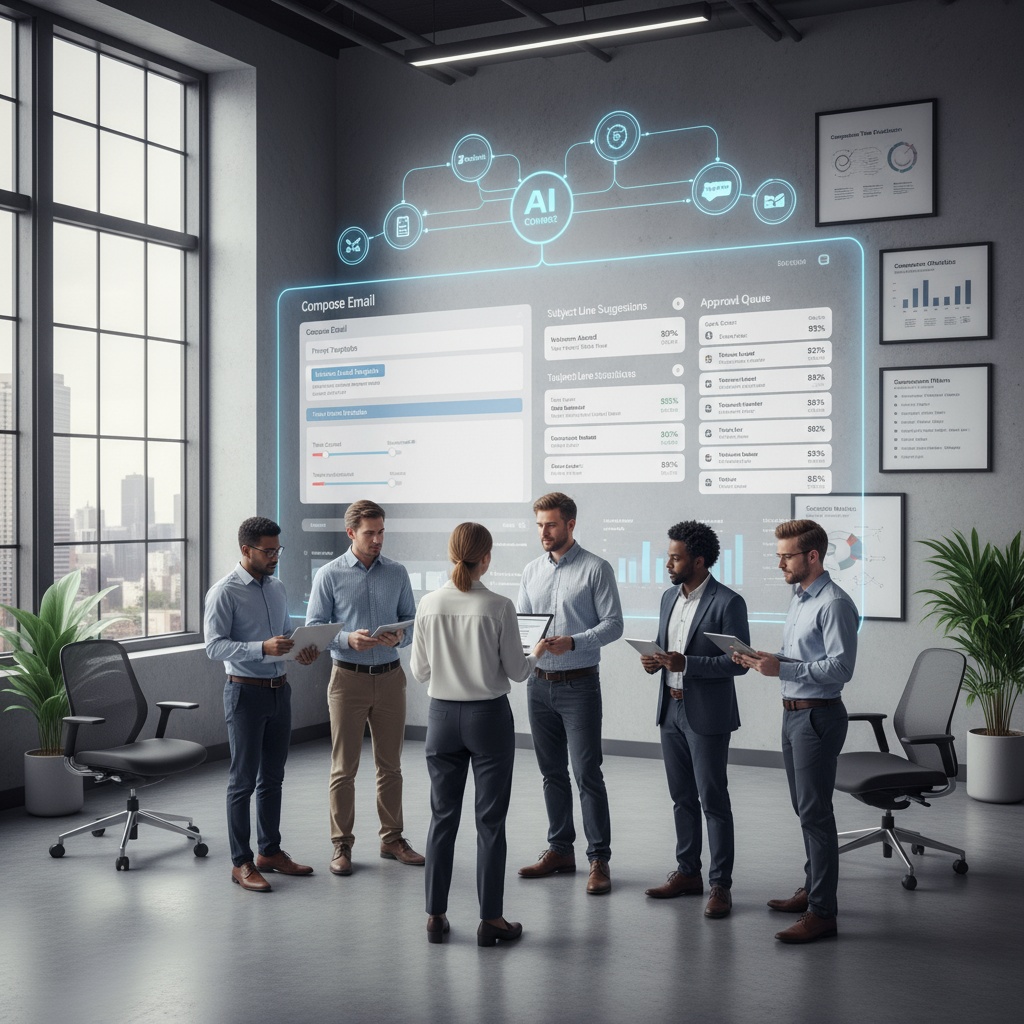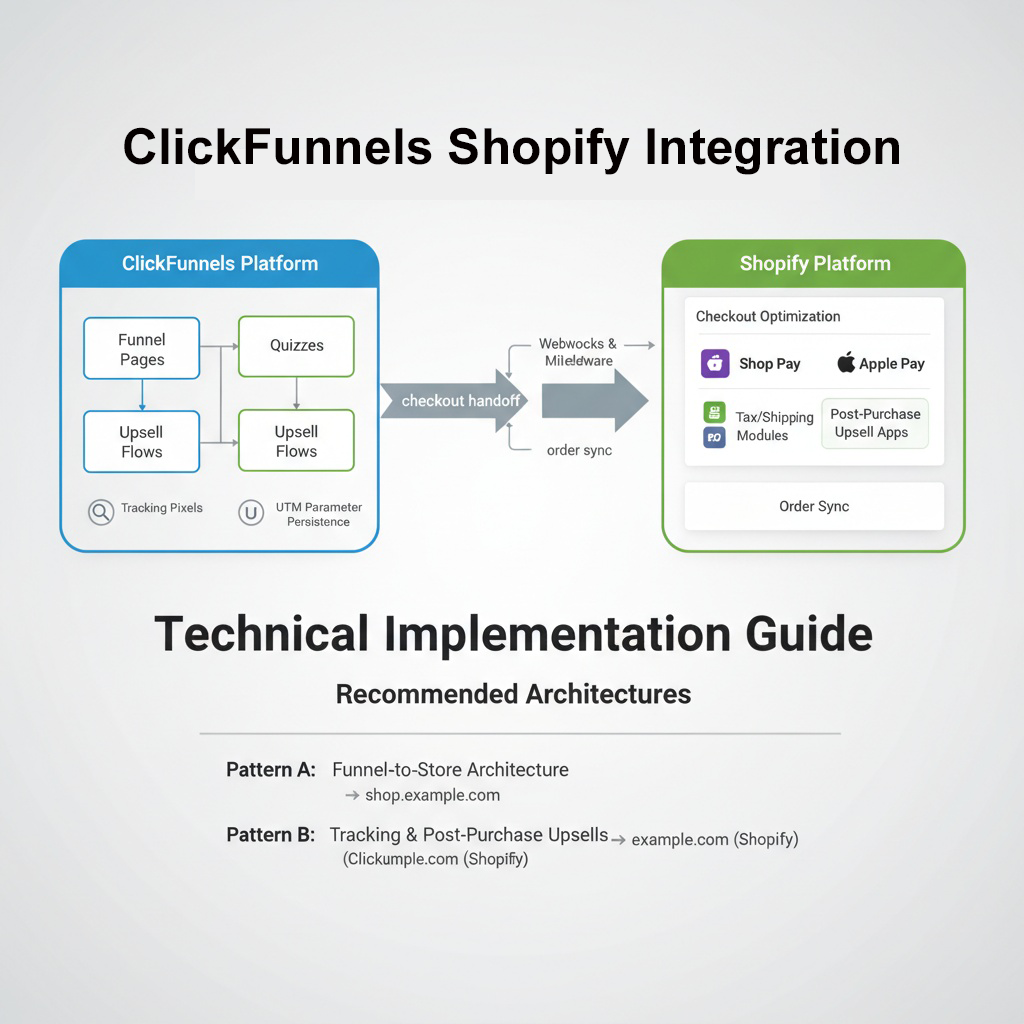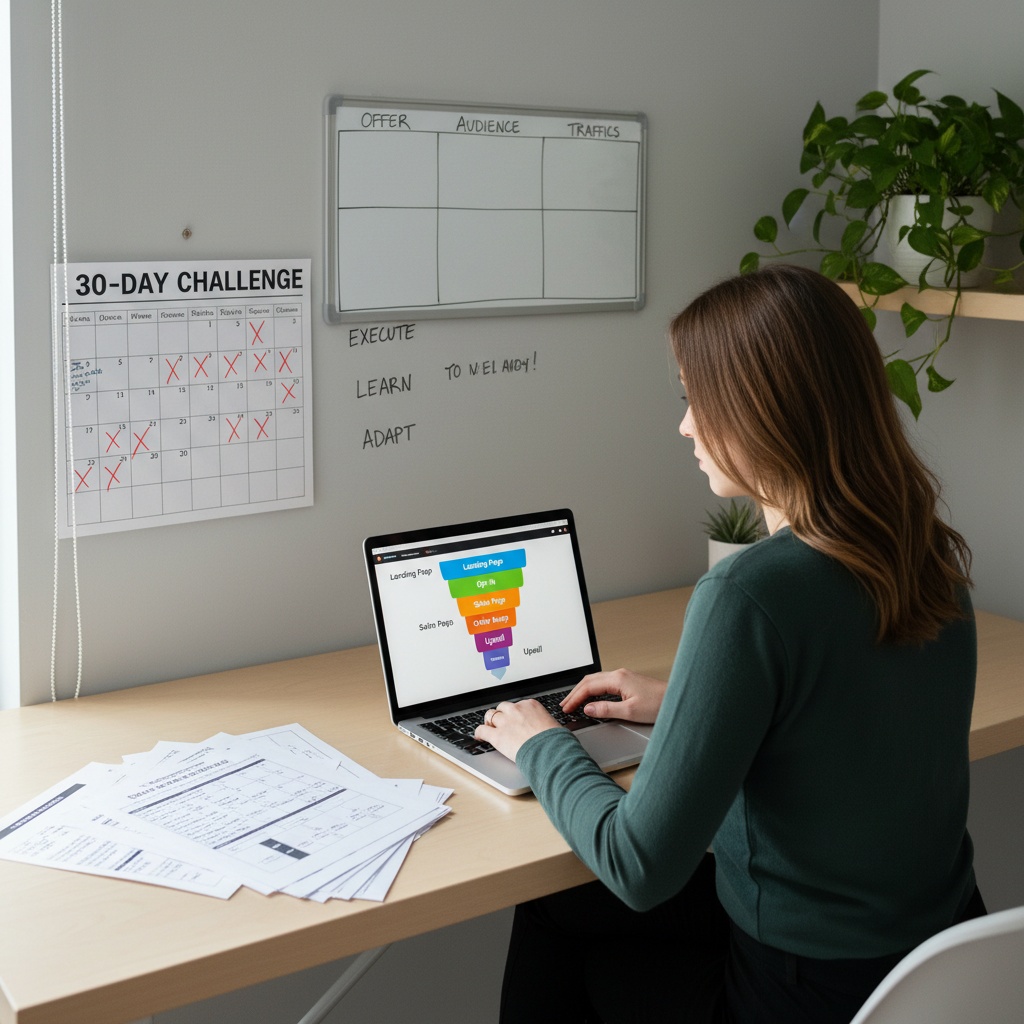Sales Funnel Templates: A practical guide to mapping stages, customizing use cases, CRM and email integration, and automating lead capture and nurturing
Struggling to turn attention into revenue—consistently? Sales funnel templates give you reusable blueprints to capture, nurture, and convert leads without locking yourself into any one tool or platform.
In plain terms, these templates outline the stages, assets, messaging, data, and automations required to move a buyer from awareness to decision—and beyond into onboarding, retention, expansion, and referral. They’re not a sales pipeline (deal tracking) or a customer lifecycle map (the entire relationship). They’re focused systems for automated lead capture, progressive nurturing, and conversion.
Built for marketers, founders, and sales ops, this guide is tool‑agnostic and hands‑on. You’ll use time‑tested frameworks—AIDA, TOFU/MOFU/BOFU, JTBD, PAS, and Pirate Metrics (AARRR)—to design funnels that match your ICP, offers, and channels, then wire them into your CRM and email stack for measurable growth.
Why templates, not tools? A ClickFunnels alternative mindset
- Stop “tool‑first” decisions; start with message‑market fit, conversion goals, and stage KPIs.
- Map a funnel you can run on any stack (no‑code, WordPress, or headless) and migrate cleanly later.
- Prioritize speed, testing, data portability, and vendor‑agnostic integrations.
What you’ll build
- A stage‑by‑stage map: Awareness → Interest/Consideration → Evaluation → Decision → Onboarding → Retention → Expansion → Referral.
- The right assets per stage: landing pages, lead magnets, forms, schedulers, demos, checkout, onboarding flows, referral hooks.
- Messaging that converts: PAS/AIDA copy, social proof, case studies, FAQs, and clear next steps.
- Automation logic: capture points, segmentation, behavior‑based branching, retargeting, re‑engagement, and fast‑lane handoffs to sales.
- Measurement: CTR, opt‑in, MQL→SQL, demo rate, win rate, CAC, LTV, and payback—instrumented with UTMs and analytics.
Built for lead funnels across industries
- B2B SaaS free‑trial to paid (PQL triggers, in‑app cues, sales assist).
- Ecommerce launches and cart recovery (UGC, countdowns, win‑backs).
- Professional services consultations (quizzes, booking, proposal follow‑ups).
- Info products/webinars (registrations, reminders, replays, deadline sequences).
CRM and email integration—without the headaches
- Clean data model: lifecycle stages, fields/tags, MQL/SQL/PQL criteria, UTM capture.
- Reliable sync: source of truth, deduping, identity resolution, sales routing and SLAs.
- Deliverability and compliance: double opt‑in, preference centers, GDPR, SPF/DKIM/DMARC warm‑up and monitoring.
Automated lead capture and nurturing, by design
- Triggers: form submits, page views, email clicks, trial signups, cart events, inactivity.
- Actions: enrichment, lead scoring (fit + intent with decay), nurture enrollment, alerts, retargeting sync.
- Quality gates: validation, spam detection, duplicate merging, safe fallback paths.
Use the sections that follow to map your funnel, assemble reusable templates, integrate CRM and email, and switch on automation—step by step.
Foundations of Sales Funnel Templates
What sales funnel templates are and why they matter
Sales funnel templates are reusable blueprints that map the stages, assets, and automations needed to guide a prospect from first touch to purchase and beyond. They provide a shared language for marketing, sales, and success teams, which speeds up planning, reduces guesswork, and makes optimization repeatable. This definition aligns with practical guides from sources like TextMagic on proven sales funnel templates and GemPages’ examples for ecommerce brands, both of which show how structured, stage-based planning shortens time to value.
Unlike ad hoc campaign plans, these templates align messaging, proof, and triggers with the intent of each stage. That alignment lowers acquisition costs by focusing effort on the few steps that actually move leads forward. It also clarifies what to automate, what to measure, and where to hand off to sales.
Funnel vs pipeline vs lifecycle: a quick comparison
A sales funnel is not the same thing as a pipeline or a lifecycle. Use the right model for the right job.
| Concept | Primary focus | Owner | Time horizon | Key artifacts | Common KPIs |
|---|---|---|---|---|---|
| Funnel | Lead capture, nurturing, and conversion steps | Marketing with sales input | Pre‑purchase through first conversion | Landing pages, lead magnets, nurture emails, retargeting audiences | CTR, opt‑in rate, MQL to SQL, demo rate, purchase rate |
| Pipeline | Deal progression after qualification | Sales | Opportunity to close | Stages, forecasts, activities, proposals | Win rate, sales cycle length, average deal size |
| Lifecycle | Entire customer relationship | Revenue operations | Awareness to referral | Onboarding plans, adoption playbooks, renewal and expansion motions | Activation, retention, NPS, expansion rate, LTV |
For a deeper overview of funnel structures and stages, see the Yesware guide on how to build a sales funnel and the Zendesk overview on what a sales funnel is.
Core frameworks that power effective lead funnels
High performing sales funnel templates are built on proven copy and growth frameworks. Use them as scaffolding, then adapt to your audience.
- AIDA for message flow. Grab attention, build interest, spark desire, and call to action. The Yesware tutorial on AIDA shows how to structure copy that nudges the next click.
- TOFU, MOFU, BOFU for content planning. Top of funnel content earns attention, middle nurtures, bottom closes. Map channels and offers to intent.
- Jobs To Be Done for customer insight. Capture the job, struggle, and success metrics that drive switching behavior. Treat JTBD as your targeting and messaging compass.
- PAS for persuasive copy. State the problem, agitate the cost of inaction, present the solution. Use PAS for headlines, lead magnets, and objection handling.
- Pirate Metrics, or AARRR. Acquisition, Activation, Retention, Referral, Revenue. Future‑Code’s examples of top sales funnel templates explain how AARRR ties stage work to growth metrics.
These frameworks keep the funnel coherent. They also set up clean measurement, which is essential when you begin testing and iterating.
Standard funnel stages with entry and exit criteria
Every stage needs explicit criteria and a clear next step. Treat these as defaults and customize to your model.
Awareness
Entry: First impression through search, social, or referral.
Focus: Earn attention with a meaningful promise tied to a real job to be done.
Assets: Educational blog posts, comparison pages, short videos, social ads.
Exit: Qualified traffic reaches a relevant landing page or engages at 2 or more touchpoints.
Interest and Consideration
Entry: Prospect consumes content or returns via branded search.
Focus: Establish fit and authority. Offer a specific next step, like a guide or quiz.
Assets: Lead magnets, checklists, buyer’s guides. For ecommerce, see GemPages’ sales funnel templates for product discovery and launch ideas.
Exit: Lead opts in or completes a high‑intent action.
Evaluation
Entry: Lead compares options and seeks proof.
Focus: Remove friction with demos, trials, case studies, and ROI calculators.
Assets: Feature pages, interactive demos, in‑app tours, customer stories.
Exit: SQL created, trial activated, or cart initiated.
Decision
Entry: Prospect shows purchase intent.
Focus: Eliminate risk, clarify pricing, and surface urgency ethically.
Assets: Pricing comparisons, FAQs, guarantee language, one‑page order forms.
Exit: Purchase, signed agreement, or scheduled start date.
Onboarding
Entry: New customer begins adoption.
Focus: Achieve first value quickly and confirm the outcome promised in the funnel.
Assets: Setup checklists, welcome emails, in‑product tooltips, quickstart guides.
Exit: Activation milestone hit, usage cadence established.
Retention
Entry: Activated customer maintains usage.
Focus: Drive habit formation and outcome reinforcement with helpful communications.
Assets: Educational series, success webinars, help center content.
Exit: Renewal or upsell opportunity identified.
Expansion
Entry: Customer usage or fit suggests upgrade or cross‑sell.
Focus: Align offers with realized value, not discounts alone.
Assets: Personalized recommendations, ROI summaries, executive value reviews.
Exit: Plan upgrade or additional product purchased.
Referral
Entry: Satisfied customer willing to advocate.
Focus: Make referring easy, visible, and rewarding.
Assets: Referral links, social sharing prompts, partner programs.
Exit: New lead sourced, tracked, and credited.
Mailshake’s primer on sales funnel strategy and the TextMagic overview of sales funnel templates provide additional examples of assets and transitions that reduce friction at each stage.
Step-by-Step Funnel Mapping
A practical mapping process turns theory into an operational plan that anyone on the team can follow. Use the sequence below to turn sales funnel templates into a documented, testable lead funnel.
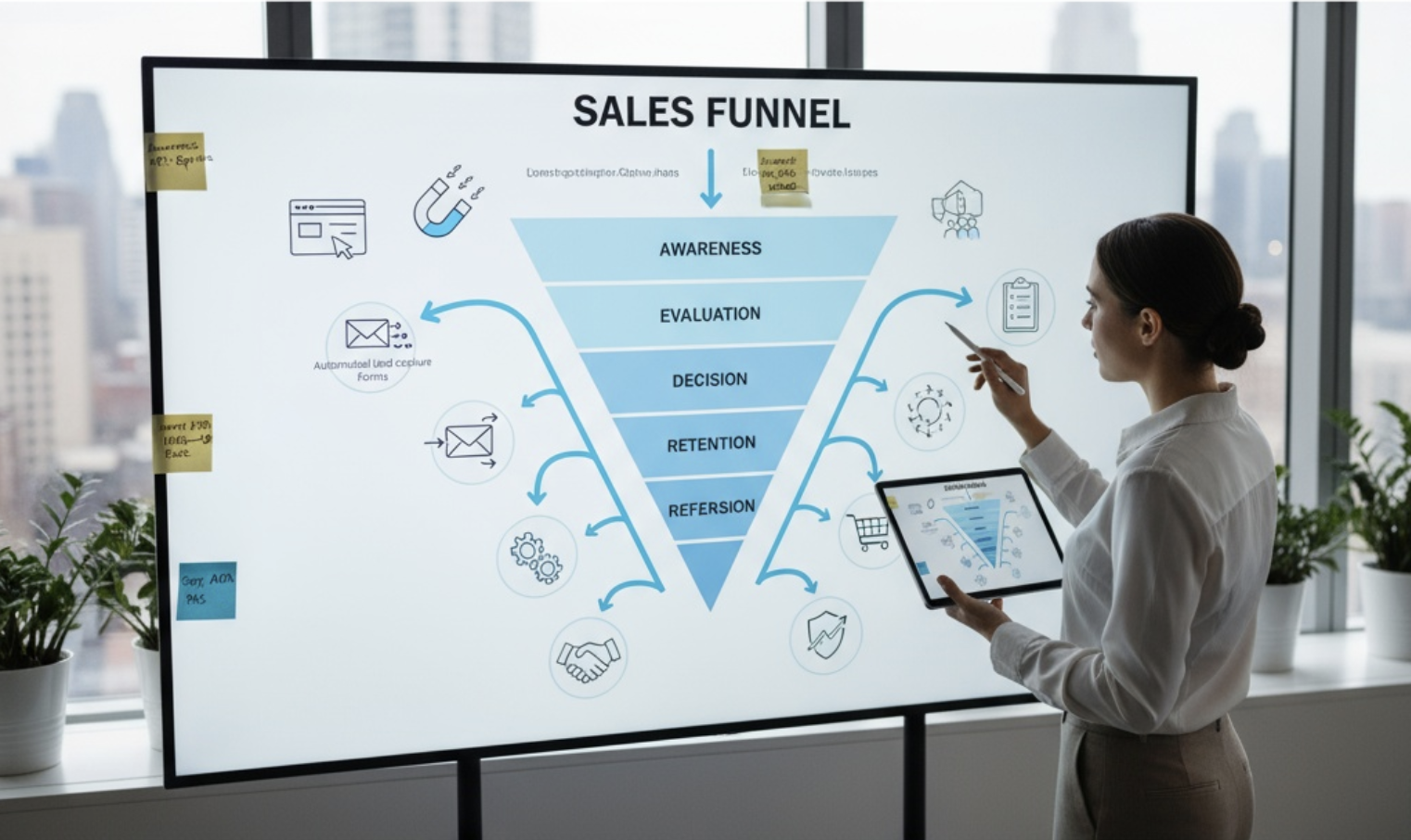
Step 1: Clarify ICP, personas, JTBD, offers, and outcomes
Document who you serve, what they want to accomplish, and what changes after they buy. This anchors every later decision.
- ICP: firmographics, budget range, buying committee, constraints
- Personas: decision maker, champion, end user, each with pains and desired gains
- JTBD: job statement, triggers, desired outcome, success metrics, anxieties
- Offers: lead magnet, core offer, add‑ons, risk reversal, onboarding promise
- Outcomes: business goals like revenue target, CAC ceiling, payback window
If your team handles a high volume of inquiries, connect this work to your shared inbox processes described in our guide on email for customer support so that sales and support speak the same language from day one.
Step 2: Set conversion goals and stage KPIs
Pick one primary conversion to optimize first, then define stage metrics that predict it. Align your KPI tree to AARRR so the math rolls up cleanly.
- Example primary goals: free trial, booked consultation, first purchase
- Stage metrics: qualified traffic rate, opt‑in rate, MQL to SQL rate, demo rate, purchase rate, activation rate, LTV
- Benchmarks: use historical baselines where possible, then set directional targets and confidence intervals
For a comparison of acquisition options that influence top‑of‑funnel volume and cost, review our SEO vs PPC breakdown to choose channels that feed your funnel efficiently. Future‑Code’s real‑world funnel examples also show how AARRR metrics guide optimization at each stage.
Step 3: Map assets per stage
List only what you need to prove value and move to the next step. Avoid bloated asset lists that never ship.
- Awareness: SEO articles, social ads, short video explainers
- Consideration: ebooks, checklists, quizzes, case studies, comparison pages
- Evaluation: interactive demo, trial sign‑up, ROI calculator, testimonial pages
- Decision: pricing page, order form or scheduler, FAQ, guarantee copy
- Onboarding: welcome email, quickstart guide, in‑app checklist, help center path
- Retention and referral: usage tips, customer stories, referral program landing page
Ecommerce teams can take cues from GemPages’ sales funnel templates for product launches, especially around teaser pages, checkout flows, and post‑purchase sequences. If you plan to shift tools, keep template parity in mind so that a future ClickFunnels alternative does not break your critical pages or forms.
Step 4: Define messaging and proof elements with PAS and AIDA
Lead with pain, agitate the stakes, present your solution, then guide to the next action. Fit your copy to the stage.
- Awareness example: Problem headline, brief proof stat, CTA to a practical guide
- Consideration example: Agitation paragraph, promise of a specific outcome, CTA to download a checklist
- Evaluation example: Desire building with social proof and quantified results, CTA to start a free trial or schedule a demo
- Decision example: Risk reversal via guarantee or compliance proof, clear pricing, CTA to complete checkout
Lean on AIDA to structure each asset and the Yesware tutorial for practical copy sequences. Use customer quotes, case metrics, and screenshots for proof. Borrow authority from recognized publications only when relevant to your audience.
Step 5: Plan automated lead capture with minimal data sets
Identify capture points that balance friction and data quality. Request only what you need to run a meaningful nurture.
- Capture points: embedded forms, sticky bars, exit‑intent popups, chat with email capture, in‑product modals for trials
- Minimal fields: email, first name, company for B2B, plus consent checkbox with clear language
- Progressive profiling: enrich later via clicks, quizzes, or firmographic enrichment
- Quality gates: validate emails, block role addresses, deduplicate by email and domain
Route high‑intent inquiries so they get a fast response. If your team uses templated replies at scale, consider the practices in our AI email response generator guide to keep tone, accuracy, and speed consistent.
Step 6: Design nurture logic, branching, retargeting, and handoff
Plan sequences that reflect intent, not a one‑size‑fits‑all drip. Branch paths based on behavior and timing.
- Early‑stage education: 3 to 5 messages over 10 to 14 days that teach, not pitch
- Mid‑stage evaluation: case study, feature proof, ROI tool, invitation to a live Q&A
- High‑intent fast lane: trigger immediate scheduler or trial onboarding and alert sales
- Retargeting: sync audiences for visitors who view high‑intent pages but do not convert
- Sales handoff: define what creates an MQL, who gets it, and the SLA for follow‑up
Keep tone and cadence consistent with what subscribers expect. Our newsletter and email marketing strategy guide explains how subject lines, cadence, and sender reputation impact opens and clicks, which directly affects nurture performance.
Step 7: Instrumentation, consent, and deliverability basics
Measure what matters, keep data portable, and protect your sender reputation. Modeling this early prevents rework later.
- Tracking discipline: UTM parameters on every link, page‑level conversion events, micro‑conversions for asset downloads
- Source clarity: first‑touch and last‑touch attribution recorded at capture, with campaign names that match your reporting
- Consent: explicit opt‑in language, double opt‑in for sensitive regions, link to preferences in every email
- Deliverability: authenticate sending domains with SPF, DKIM, and DMARC, warm new domains gradually, suppress hard bounces and chronic inactives
- Data hygiene: standardize fields, define lifecycle stages, and document naming conventions in a central playbook
For additional grounding, see Act! CRM’s examples of funnel templates for small teams and FitSmallBusiness’ small business funnel templates, both of which reinforce the importance of clear tracking and compliant capture practices. Our own newsletter and email marketing strategy resource covers sender reputation and content tactics that lift engagement throughout your nurture.
As you complete the mapping worksheet, keep your next step in mind. In the following section, we will turn this blueprint into concrete sales funnel templates for specific use cases and show how CRM and email systems connect the dots so automations, triggers, and scoring work in concert.
Template Library by Use Case: advanced flows and optimization levers
B2B SaaS Free-Trial Template
Design for speed to first value, not just signups. Your free-trial flow should front-load a single activation event that correlates with retention, then route high-intent users quickly.
Flow blueprint
Targeted ads or partner content to a feature-specific landing experience with proof and a single CTA for trial.
Signup gate captures only essential fields, then a preference screen for role, use case, and time-to-value goals to personalize onboarding.
In-app checklist tied to one core action. Trigger a short email series mapped to AIDA, with micro-surveys to learn friction.
Product-qualified lead moments push tasks to sales when threshold behaviors occur.
PQL and telemetry
Track a small set of activation signals like integration completed, first dataset imported, or team invite sent.
Weight events by difficulty and proximity to value to create a simple PQL score that refreshes daily.
Apply decay for inactivity so sales only engages when momentum is visible.
Advanced plays
Create a fast lane for enterprise-fit PQLs with immediate human outreach and a shared Slack or chat bridge.
Use in-app nudges that mirror email messaging to eliminate channel mismatch.
Offer a 5-minute concierge setup for users who stall before the first activation moment.
Benchmarks to pressure-test
Trial to activation at 25 to 45 percent for mid-market tools.
PQL to opportunity at 30 to 60 percent when PQL definitions are behavior-rich.
Assisted conversion lift of 10 to 20 percent from timely sales touches.
Useful references on funnel models and copy frameworks include the Yesware guide on how to build a sales funnel and the Zendesk overview of what a sales funnel is for alignment between teams.
Ecommerce Launch Template
Treat a launch as a staged event with controlled access and layered scarcity. Build the audience early, then protect checkout performance when traffic spikes.
Prelaunch scaffolding
Teaser page with opt-in and expected drop date. Use a two-tier waitlist with early access for engaged joiners.
Run a micro-survey at opt-in to collect preferences for size or product variant and store these as attributes for dynamic messaging.
Launch mechanics
Countdown email and SMS across staggered time zones. Offer a cart reservation window for VIPs to limit false scarcity.
Implement browse abandonment versus cart abandonment splits. Adjust tone based on item price, inventory, and user history.
Use dynamic shipping thresholds that promote bundle behavior while monitoring margin impact in real time.
Recovery and expansion
If inventory sells out, present a pre-order with lead times and clear expectations. Push complementary products for immediate revenue.
Trigger post-purchase cross-sell at shipment, not order, to reduce support tickets and improve CSAT.
Benchmarks to watch
Launch opt-in rate at 35 to 55 percent for qualified traffic.
Cart recovery lift of 8 to 15 percent with proper browse/cart segmentation and timed incentives.
Post-purchase cross-sell conversion at 5 to 12 percent when personalized by variant preferences.
For deeper eCommerce use cases, scan these eCommerce sales funnel templates that catalog variations for high-velocity storefronts.
Professional Services Template
Optimize toward booked consultations with lead quality filters and preparation steps that reduce no-shows and speed decisions.
Guided diagnosis
Use a short quiz or intake to segment problem type and urgency. Present tailored outcomes and route to a scheduler with the right specialist.
Gate the calendar behind verified email to cut spam, then send a pre-call primer with case studies aligned to the quiz outcome.
Sales choreography
Auto-create CRM tasks with service level agreements tied to appointment time. Pull notes back into the CRM after calls so marketing can refine questions.
For no-shows, send a one-click reschedule and a compressed nurture focusing on risk reversal and clear next steps.
Proposal velocity
Pre-build modular proposal templates with pricing anchors and social proof by industry. Trigger a proposal follow-up track with a short FAQ and deadline.
Nudge stalled deals with a cost-of-inaction calculator customized to the discovery call notes.
Performance guardrails
Consultation rate from MQLs at 20 to 35 percent when quiz routing is present.
Proposal acceptance at 30 to 55 percent with strong baselines and clear deliverables.
Small firms can get structure from these small business templates while preserving a tailored consultation experience.
Info Product and Webinar Template
Drive registrations, then optimize show-up rates and post-event conversions using engagement signals.
Registration and attendance
Offer multiple time slots and an on-demand fallback. Add calendar file delivery and a reminder cadence across email and SMS.
Segment by topic interest and persona. Insert checkpoints during registration to qualify buyers versus learners for post-event branching.
Live experience and pitch
Use a content arc that leads naturally to the offer. Plant success stories early, then use a focused demo of outcomes.
Provide a limited-time bonus aligned to the initial problem. Offer a one-question poll to capture objections for follow-up.
Replay and deadline flow
Open a 48-hour replay with chapters. Track skip patterns and tailor objection-handling emails to what viewers missed.
For non-buyers, trigger a downsell or a starter course to keep momentum.
Expected ranges
Registration rate at 25 to 45 percent from qualified traffic.
Attendance at 30 to 50 percent for live sessions with strong reminder sequences.
Conversion from attendees at 5 to 15 percent with clear outcomes and guarantees.
For additional structures, review these proven sales funnel templates and real-world templates to see how teams adapt flows across industries.
CRM and Email Integration at Scale
Data Model and Sync Architecture
Define a single source of truth for identities, events, and stages. Model people, accounts, and opportunities in a way that supports both marketing orchestration and sales execution.
Core structure
Standardize lead and contact fields with required attributes for routing and personalization. Include UTM capture and last-touch fields with timestamps.
Maintain a lifecycle model that supports recycled states and reason codes for loss, then report conversion by entry source and segment.
Sync integrity
Use deterministic matching on email with secondary keys like phone and company domain. Apply fuzzy matching with conservative thresholds to avoid merges across unrelated contacts.
Route webhooks and batch syncs through a middleware layer with idempotency keys to prevent duplicate records.
Version your schemas and keep a change log so downstream automations do not break when fields change.
Data stewardship
Run nightly dedupe, bounce suppression, and role removal. Log enrichment sources and confidence scores so sales can trust firmographic data.
Keep a sandbox for automation QA and schema tests before pushing updates to production.
Consent and Deliverability
Compliance and inbox placement are pipeline levers, not afterthoughts.
Consent operations
Honor double opt-in where required, store consent metadata with IP and timestamp, and expose a preference center that recognizes multiple brands and content types.
Support country-based routing so users in restricted regions receive compliant flows.
Inbox performance
Authenticate mail with SPF, DKIM, and DMARC alignment. Warm new sending domains gradually and spread volume across pools to avoid reputation spikes.
Segment by engagement recency and never mail unengaged cohorts at scale. Sunset rules should be time bound and reversible after a re-permission campaign.
Use seed tests judiciously, then validate performance with recipient-level metrics. Deepen your practice with this guide to newsletter and email marketing that covers sender reputation and CTR patterns.
Automations and Workflows Deep Dive
Triggers and Actions
Instrument meaningful behaviors, then act in near-real time.
High-signal triggers
- Pricing page dwell, trial created, first team invite, cart created, checkout abandonment, replay watched past 60 percent, quiz completion, and repeated visit to proposal pages.
Scalable actions
- Enroll in a context-specific nurture, adjust lead score, create sales tasks with urgency tags, sync custom audiences for retargeting, and write back events to the CRM timeline.
Timing windows
- Use rapid response for hand-raise signals like demo requests. For education sequences, spread messages over 7 to 14 days and branch after the third touch based on clicks.
Lead Scoring and Branching
Move beyond static tallies with decay and disqualification logic.
Fit and intent model
- Fit score from firmographics and role. Intent score from recency, frequency, and event value. Apply negative scoring for student emails, competitor domains, and content-only behavior.
- Decay intent by 20 to 30 percent after 7 days of inactivity, reset after high-value events.
Fast lanes and education paths
- When both fit and intent exceed thresholds, trigger a concierge path with calendar access and a tailored pre-call pack.
- For low-intent but good-fit leads, deliver an educational series that culminates in a small ask like a checklist download to re-signal interest.
Model governance
- Back-test quarterly against closed-won data to recalibrate weights. Compare against heuristic baselines from Mailshake’s free template resources to sanity check assumptions.
Documentation and Quality Gates
Reliability scales only with discipline.
Quality controls
- Validate email format and MX records, throttle duplicate form posts, require bot protection on high-risk pages, and quarantine anomalous spikes for review.
- Assign owners to each automation, set runbooks for failure states, and implement alerting on error rates and SLA misses.
Versioning and audits
- Name flows with semantic versions, maintain change histories, and schedule quarterly audits to remove orphaned actions.
- Dry-run new branches on a 5 to 10 percent canary cohort before full rollout. Capture QA outcomes in your analytics workbook.
To streamline follow-ups that require tailored language at scale, pair your nurture flows with an AI email response generator that supports tone controls and QA workflows.
ClickFunnels Alternative Guidance
Evaluation Criteria
Choose a stack by performance, control, and data portability rather than brand halo.
Performance and UX
- Core Web Vitals, fast page rendering, responsive forms with inline validation, and lightweight scripts to reduce conflicts with analytics tags.
Experimentation and operations
- Native A/B and holdout testing, audience targeting rules, and reliable webhooks. Ensure transparent exporting of templates, content, and data without penalties.
Data and integration
- Mature APIs, flexible field mapping, bidirectional CRM sync, and secure token management. Confirm GDPR tooling, audit logs, and role-based permissions.
Cost and scale
- Price for expected volumes across pages, forms, email, and contacts. Forecast total cost of ownership including middleware and engineering time.
Stack Recipes and Migration Checklist
Move deliberately to avoid data loss and attribution gaps.
Stack patterns
No-code builder paired with a form tool, an email automation platform, and a CRM that handles routing and reporting.
WordPress with robust forms, lightweight checkout, CRM and email integration, and a connector like a workflow automation service for specialty logic.
Headless static site with serverless forms, webhooks into CRM, and an email service with granular suppression controls.
Migration steps
Inventory every URL, asset, and automation. Recreate forms with hidden UTM fields and consistent naming. Migrate pixels, events, and audiences intact.
Map redirects with query preservation. Validate page speed and rendering. QA each funnel stage with real test users and record behavior.
Run a two-week parallel period for priority funnels, monitor KPI parity, and only then deprecate the legacy stack.
For inspiration on structure and alternative patterns across industries, browse this roundup of top sales funnel templates and these sales funnel templates for growth-oriented teams. If paid traffic is part of your launch plan, calibrate budgets and timeline tradeoffs using this SEO vs PPC comparison to match demand capture with your new stack.
Sales teams that coordinate closely with marketing often automate their outreach and ticket handling. Consider integrating an AI email response workflow into your CRM and email stack to standardize tone, accelerate replies, and keep context synchronized across records.
Conclusion
Ultimately, sales funnel templates give you a reusable blueprint to turn awareness into revenue with precision—aligning stages, assets, messaging, and automations to hard KPIs so you build high‑converting lead funnels on purpose, not by accident.
This guide resolves the whole system end‑to‑end: define outcomes first, align stage metrics, pair persuasive proof with every offer, capture only what you need, and run behavior‑driven nurture that advances intent. Instrumentation and compliance aren’t afterthoughts—they’re built in.
With CRM and email tightly integrated, automated lead capture and nurturing run on rails. Clean data, clear routing, and pragmatic scoring create fast paths for high intent and education tracks for early research, while deliverability discipline keeps your messages landing and performing.
The use‑case library shortens the distance from plan to launch—free trials, product drops, consultative bookings, and webinars—each with triggers, sequences, and success metrics you can adapt without reinventing the flow.
If you’re replacing a ClickFunnels alternative, the selection criteria, stack recipes, and migration checklist remove lock‑in and protect attribution. You keep speed, gain control, and move forward with a stack that serves your process—not the other way around.
In conclusion, choose your primary conversion goal today, map the stages, connect your data, and ship a v1 funnel in 30 days. Then iterate with discipline: test one change per stage, report with a KPI tree, and scale what wins.
The evidence shows that clear design plus automation compounds. Put these frameworks to work now, and convert consistent execution into durable growth.
Frequently Asked Questions
A sales funnel template is a reusable blueprint for moving prospects from first touch to purchase using defined stages, assets, and automations. It focuses on capturing, nurturing, and converting leads with repeatable flows. A sales pipeline tracks opportunity stages after a lead is qualified (e.g., demo, proposal, negotiation), while the customer lifecycle spans the entire relationship (onboarding, retention, expansion, referral). Templates sit in the middle—powering lead funnels with clear entry/exit criteria and automation.
Match the template to your primary conversion event. For B2B SaaS, start with the B2B SaaS Free‑Trial flow if you drive trials or PQLs; for consultation-led businesses, the Professional Services template prioritizes booking and show rates; for ecommerce, choose Ecommerce Product Launch with cart recovery; and for courses/events, the Info Product/Webinar template focuses on registration, attendance, and deadline sequences. Pick one, launch an MVP funnel, then expand assets and automated lead logic as data comes in.
Capture the minimum viable dataset: email, first name (optional), and explicit consent. Add UTM parameters automatically and enrich passively (location, company via domain) rather than adding form fields. Use progressive profiling later for role, company size, or use case to improve segmentation without hurting opt-in rates. Fewer fields improve conversion rate; richer data comes from behavior (pages viewed, clicks) inside your CRM and email system.
Define a unified data model (lead/contact fields, lifecycle stages, MQL/SQL criteria) and choose a single source of truth—usually the CRM. Use bidirectional sync for key fields (status, consent, subscriptions), enforce deduplication/identity resolution by email and user ID, and timestamp all updates. Sync UTM fields on first touch and last touch, log meeting outcomes back to marketing, and maintain consent management (double opt‑in, preference center) across tools to avoid conflicts.
Combine a fit score (firmographics/demographics) with an intent score (behavior like pricing visits, trial activation, email engagement). Set clear MQL/PQL thresholds and a fast‑lane path for high‑intent actions (e.g., demo requested). Define SLAs: sales must respond within 15–30 minutes for hot leads, and marketing should recycle leads that don’t connect after 3–5 attempts. Document criteria in your CRM and automation platform so routing, tasks, and nurture sequences trigger consistently.
Start with data portability: export contacts, tags, and page assets. Rebuild pages with template parity (copy, CTAs, forms, checkout) in your new stack, then set 301 redirects to preserve SEO and attribution. Transfer pixels/UTMs, map all automations and webhooks, and validate tracking in a staging environment. Run QA on forms, emails, payments, and mobile speed before cutover. Keep both systems live for 7–14 days with traffic split testing, then deprecate the old stack after error logs are clean.
Track stage‑specific KPIs: Awareness (CTR, CPC), Interest (opt‑in rate), Evaluation (MQL→SQL rate), Decision (demo‑to‑win rate, trial‑to‑activation), Onboarding (time‑to‑value), Retention (churn, product usage), Expansion (upsell rate), Referral (referral rate). Review acquisition and conversion metrics weekly, lifecycle metrics monthly, and profitability (LTV/CAC, payback period) quarterly. Build a KPI tree to see how improvements in lead quality or onboarding impact downstream revenue.
Diagnose top‑down. First, validate traffic quality (UTMs, audience match). Next, improve message‑market fit with clearer promise, proof, and risk reversal; test offers (lead magnets, trials, bonuses) before design tweaks. Reduce friction: fewer form fields, faster page speed (<2s), visible CTAs, and trust badges. If trials stall, fix onboarding: define a single activation event, add in‑app checklists, and send a 5‑email AIDA nurture. Confirm deliverability (SPF/DKIM/DMARC) if email engagement is weak.
Most teams can ship an MVP funnel in 2–3 weeks: week 1 (copy, wireframes, offer), week 2 (pages, forms, CRM and email integration), week 3 (automations, QA, tracking). Budget for a lean ClickFunnels alternative stack typically ranges $150–$600/month depending on page builder, CRM, and email volume. Minimum roles: marketing owner (copy/offers), ops/automation (integrations), and sales (SLAs). Use a 30–60–90 plan: launch, automate/report, then scale/testing.
Authenticate domains with SPF/DKIM/DMARC, warm up new sending domains gradually, and maintain list hygiene (bounce handling, suppression, and a sunset policy after 90–120 days of inactivity). Use double opt‑in and a clear preference center to align with GDPR/CCPA. Segment by engagement to protect sender reputation, throttle send times for large blasts, and monitor spam complaints and blocklists weekly. Good deliverability protects your CRM and email investment and improves ROI across the funnel.
Use A/B testing for high‑impact changes (headline, offer, CTA) and when traffic is limited; it requires smaller sample sizes and yields faster, clearer decisions. Reserve multivariate testing for high‑traffic pages where you’re optimizing multiple elements simultaneously (e.g., headline + image + form length). Test one stage at a time, run for 1–2 full buying cycles, and stop only after reaching statistical confidence and stable results across segments.

